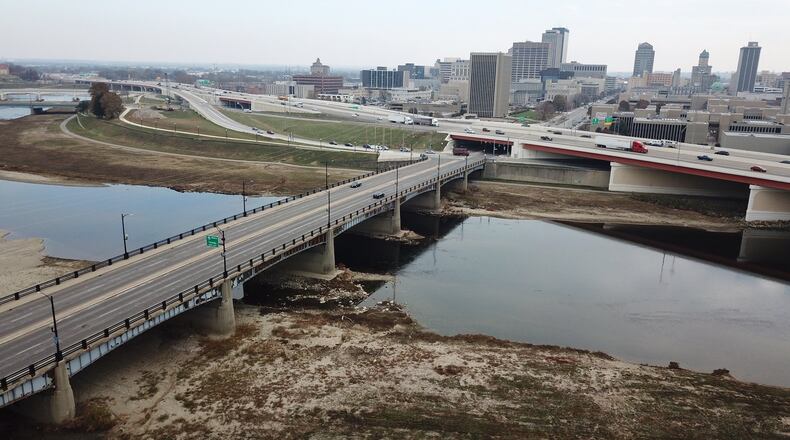Funding for the project came from local, state and federal agencies, like the Ohio Department of Transportation (ODOT) and the Miami Valley Regional Planning Commission. ODOT is funding 95% of the Third Street bridge project through the Local Major Bridge Program.
Vehicular and pedestrian traffic will be redirected to Fifth Street during construction.
EARLIER REPORTING: Artist ‘Bing’ Davis to help design Third Street Bridge
The bridge was originally built in 1904. It underwent a major rehabilitation last in 1949 and required emergency repairs in 2010 and 2011. Officials said at the time the bridge was not at risk of collapsing. Eagle Bridge is the contractor for this project.
The county held three public meetings to get input on what community wanted in the new bridge, Gruner said.
Gruner said some view the Third Street bridge as a barrier, but the county hopes this project can start to change that perception.
“We know there’s a divide still, unfortunately, in our community,” said Montgomery County Commission President Debbie Lieberman. “People do feel left behind in parts of the west side. They feel no one is investing over here… We have not ignored those concerns. In Montgomery County, we talk a lot about investing in places, and so I think this is a way we are investing in this place.”
EARLIER REPORTING: County’s $21.6 million bridge project will be its biggest ever
Also known as the Peace Bridge, the span links downtown with many of Dayton’s most historically-significant sites, including those associated with Paul Laurence Dunbar and the Wright brothers.
Those historic figures — as well as Martin Luther King Jr.’s 1963 march on Washington, which is commemorated every year locally with a march over the Peace Bridge — will be recognized in sculptures planned for two of the bridge’s piers that face the recreation trails on either bank, said Gruner.
Four overlooks are planned for the bridge with two historic tablets at each. Each tablet will display information about things like the Tuskegee Airmen and the Civil Rights Movement in Dayton. There will also be a QR code next to each panel that passersby can scan and learn more.
Dayton artist Willis “Bing” Davis helped to design the bridge.
“This is one of the most enjoyable art experiences I’ve ever had in my career,” Davis said on Monday. “When people visit here from out of town, this is where you’ll want to take them. It’s going to do the bridging that we need to have done in terms of bringing our community together.”
Currently, the bridge carries about 11,700 vehicles day. The new bridge will carry 15,000 daily, according to the county engineer’s office.
The new bridge will also be wider to accommodate a center two-way left turn lane as well as a 10-foot-wide northern sidewalk and a 17-foot-wide southern shared-use path. Both replace existing 8-foot sidewalks, plans show.
About the Author

